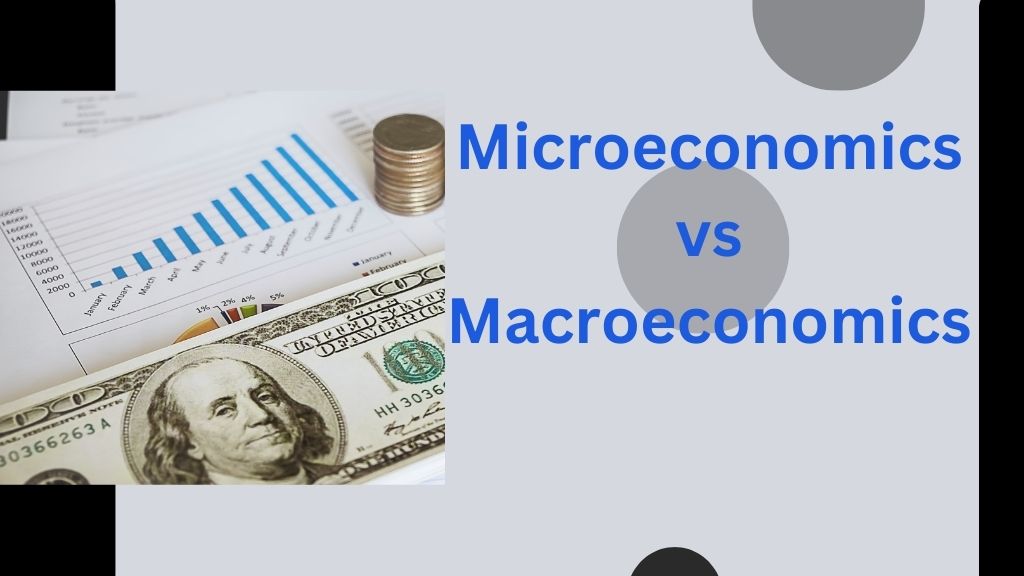MICROECONOMICS VS MACROECONOMICS
Economics is the study of how people cooperate to turn scarce resources into commodities and services that may be distributed among themselves in order to satisfy their limitless demands. Microeconomics and macroeconomics are the two main divisions of economics. Microeconomics vs Macroeconomics are the two basic categories into which economics is divided.
The Economic History:
Economics back in the 1800 c.e was merely the study of how human communities controlled the creation, exchange, and consumption of products and services. The Wealth of Nations, written by Scottish philosopher Adam Smith in 1776s, is widely considered as the work that gave economics its foundation. Economists were baffled by the Great Depression because they were unable to provide a logical explanation for the severe market collapse of the 1930s. Economists believed that the analysis of individual markets would be able to explain the behavior of variables like unemployment and output during the period between the release of Smith’s book and the Great Depression.
Macroeconomics’s Origins: The General Theory of Employment, Interest, and Money was written by John Maynard Keynes, who is regarded as the father of macroeconomics, in 1936. He pioneered the simultaneous consideration of economic, labor, and financial equilibrium in the book. Disequilibrium economics, the study of deviations from general equilibrium, was another idea he introduced.
Now microeconomics examines the behaviour of a single entity, such as an individual, business, home, market, or industry. On the other hand, macroeconomics examines the economy as a whole, evaluating not just one unit but the combination of all, including businesses, households, nations, industries, markets, etc.
Microeconomics:
The area of economics known as microeconomics focuses on the actions and results of individual economic agents, such as consumers, families, businesses, and industries. It determines how the scarce resources are distributed among various people to meet their needs. Additionally, it outlines the requirements for the best feasible resource utilisation in order to maximise productivity and societal welfare. In order to make a wise choice regarding the distribution of limited resources and potential uses for them, demand is crucial in determining the quantity and price of a product as well as the price and quantity of related goods (complementary goods) and substitute products.
- Microeconomics examines how families and individuals make use of their income.
- How do people choose how much money to set aside for unforeseen circumstances?
- Which combination of goods and services, given their restricted resources, best meets their needs and desires?
Additionally, it establishes what kinds of goods and how many goods the company should produce. What price should the company charge the target market for its products and services? What financial resources will the company employ to launch or run the business? How many employees will be hired for the company, and at what rate? When should the company grow, shrink, and shut down?
Macroeconomics:
The entire economic phenomenon, or the total economy, is discussed in macroeconomics. It mainly focuses on issues that have an impact on the entire economy as well as the behaviour and performance of aggregate variables. In addition to covering the primary economic sectors including unemployment, poverty, general price level, total consumption, total savings, GDP (Gross Domestic Product), imports and exports, economic growth, globalisation, monetary/fiscal policy, etc., it also encompasses regional, national, and international economies. Here, we talk about how changes in macroeconomic variables affect how equilibrium is reached.
- It determines how much economic activity there is in the economy?
- What are the nation’s rates for unemployment, poverty, and inflation?
- What are the problems that cause the economy to grow or shrink?
- What is the country’s population’s standard of living?
- How much does it cost to live there?
Furthermore, macroeconomics not only examines the problems the economy faces but also contributes to finding solutions, allowing the economy to run smoothly.
The Distinction Between Micro economics vs Macro economics is explained below:
Microeconomics is the study of a specific economic unit, such as an individual, household, business, or industry. It investigates economic problems on a personal level. On the other hand, macroeconomics examines the entire economy rather than a single unit. It achieves this by examining aggregate units like national income, the general level of prices, total consumption, etc. It covers a range of economic concerns. Individual economic units are emphasised in microeconomics. Microeconomics is used to address operational or internal issues. It determines the price of a specific commodity along with the prices of complementary and substitute goods. Microeconomics employs a bottom-up strategy
The two fundamental instruments of microeconomics are supply and demand. Contrarily, the main tools of macroeconomics are aggregate demand and supply.
Microeconomics Advantages:
- It aids in determining the costs of a specific product as well as the costs of other production elements, such as land, labour, capital, organisation, and entrepreneur.
- It is founded on a free enterprise economy, meaning the business is free to make its own judgments.
Cons:
- Although the aggregates are occasionally diverse, its examination indicates that they are homogeneous.
- It excludes consideration of an individual’s welfare and only considers aggregate characteristics.
Macroeconomics examines the entire economy rather than a single unit. It achieves this by examining aggregate units like national income, the general level of prices, total consumption, etc. It covers a range of economic concerns. The focus of macroeconomics, in contrast, is on broad economic variables. While macroeconomics aids in maintaining the general price level and aids in resolving significant economic issues like inflation, deflation, disinflation, poverty, unemployment, etc. while macroeconomics adopts a top-down approach when analyzing any economy.
Macroeconomics Advantages:
- It aids in identifying the factors that contribute to the balance of payments’ deficits and surpluses.
- It assists in formulating economic and fiscal strategies and resolves public finance problems.
Cons:
- Although the aggregates are occasionally diverse, its examination indicates that they are homogeneous.
- It excludes consideration of an individual’s welfare and only considers aggregate characteristics.
Interdependency:
While microeconomics focuses on how to distribute scarce resources among individuals, macroeconomics studies how to distribute scarce resources among many people in a way that will maximise the use of those resources. At the same time that macroeconomics investigates the aggregate variables, microeconomics studies the individual units.
They both believe that the best possible use of the nation’s productive resources is the only way to ensure its economic welfare. We can infer their interdependence in this way. Additionally, studying all of the two branches of economics is important for a complete comprehension of the subject.
Conclusion:
Microeconomics and macroeconomics are neither dissimilar fields of study or incompatible concepts; rather, they work best together. Micro and macroeconomics are the two sides of the same coin, just as every coin has two sides. In this sense, they span the entire economy because one person’s fault is another person’s virtue. The application area is the sole crucial distinction between them.



